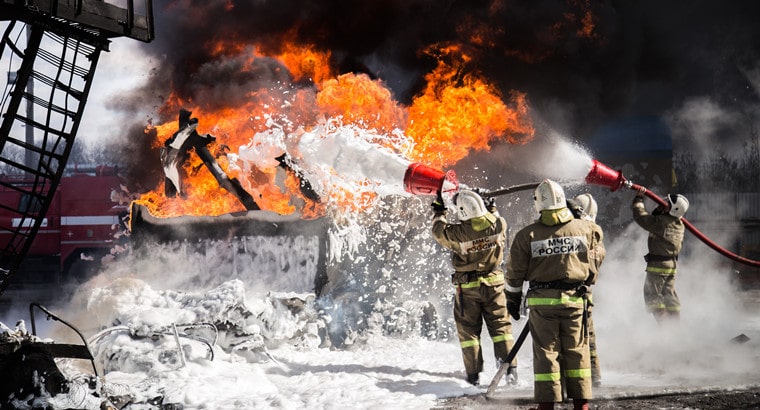Firefighting foam has been a useful tool in combating flammable liquid fires for decades. However, recent studies have shown there are potential health risks when around these foams for too long. Leaving those with chronic health issues.
If you believe that you have suffered health issues due to exposure to firefighting foam, you may consider filing a claim to seek compensation for your damages. It’s important to gather the necessary information to build your claim. You don’t want to miss out on anything that you are rightfully owed.
Documented Exposure History:
The first step in building a compelling firefighting foam exposure claim is to gather detailed documentation of your exposure history. This includes information about how you were exposed to this foam and the location. If you were a firefighter, information about the fire incidents you responded to, and the specific firefighting foam used is crucial.
Additionally, any records of training sessions or exercises involving the use of firefighting foam should be collected. Having a clear timeline of when and where you were exposed to this foam can help bring it back to your health problems. You need to be able to prove this easily.
Medical Diagnosis:
Getting ahold of your medical documents is needed for your AFFF lawsuit information. These records should list the symptoms and injuries that are associated with your exposure. Be sure to seek medical attention promptly after experiencing symptoms to strengthen your case.
Any official diagnosis related to PFAS exposure or related health conditions, such as kidney or liver disease, cancer, or thyroid disorders, should be included in your claim. These details are important for any legal professional that you reach out to.
Expert Witness Testimonies:
Expert witness testimonies can add significant weight to your firefighting foam exposure claim. These experts may include medical professionals specializing in PFAS-related health issues or environmental scientists knowledgeable in hazardous chemical exposure. They can help back up the evidence in your claim. Your attorney will reach out to ones that can go through your health history and exposure with care. You won’t have to worry about trying to back up your claims when you have these testimonies.
Workplace and Safety Records:
If your exposure to firefighting foam occurred within the scope of your employment, gather relevant workplace and safety records. This includes any safety protocols, equipment guidelines, and material safety data sheets (MSDS) related to the use of firefighting foam at your workplace.
These records can show whether your employer took appropriate measures to protect you from potential health risks associated with firefighting foam. Your employers need to make sure that you are always covered. If they don’t it shows that you were working in a negligent environment, which you can add to your claim.
Witness Statements:
Collecting statements from witnesses who can attest to your exposure to firefighting foam can bolster your claim’s credibility. These witnesses could be fellow firefighters, colleagues, or even civilians present during the incidents where the foam was used. Their statements can provide perspectives on your exposure and any adverse health effects they may have observed in you. This will be able to show that your claim still holds up. It’s important to reach out to people who were around you before and after your exposure so legal professionals can hear the whole story.
Personal Impact and Damages:
Aside from the physical and medical evidence, it is essential to document the personal impact of your health issues caused by firefighting foam exposure. It’s important to journal about your symptoms and if they start to get worse over time.
Detail any financial losses incurred, such as medical expenses, lost wages, or ongoing treatment costs. These are important for your claim and how the exposure caused you these problems. Demonstrating the tangible and intangible effects of the exposure can help ensure fair compensation for your damages. Make sure to write these out immediately when you notice something is off.
Bottomline
A solid firefighting foam exposure claim requires thorough documentation and evidence. Building a claim requires the necessary details. It’s important to gather any information regarding your health and exposure. You don’t want to forget about anything during this time.
Research a trusted legal team in your area. They will find you an attorney that is ready to fight your case. You won’t have to fight this fight alone; your attorney will be by your side and help you throughout the process.










